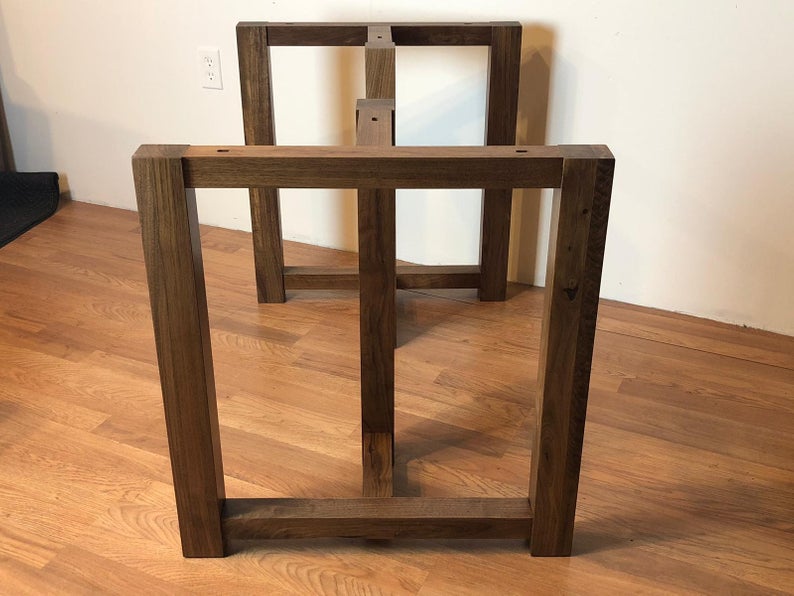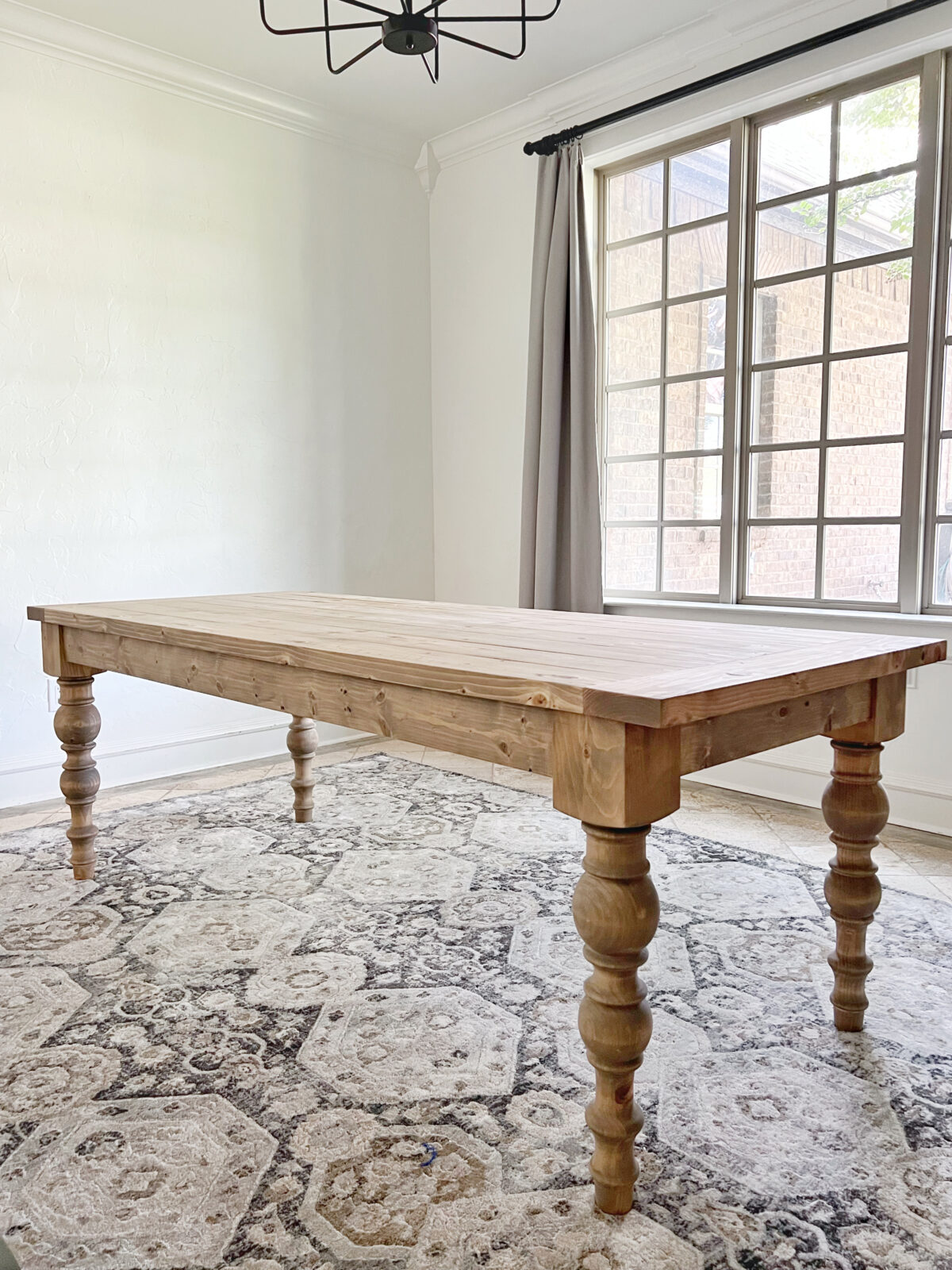What to Take Into Consideration When Selecting Dining Table Legs Timber for Your Home.
When selecting timber for eating table legs, a number of critical variables require cautious consideration to make certain both functionality and visual appeal. The kind of timber chosen can substantially influence the table's toughness, security, and general design, while the upkeep demands might affect long-term use. Furthermore, the interaction of grain patterns and color with existing furnishings can create a cohesive layout. Recognizing these aspects is essential, yet several forget the essential facet of budgetary restrictions. As we discover these factors to consider better, the implications of your options may expose unanticipated challenges and possibilities.

Relevance of Timber Kind
When choosing eating table legs, the choice of wood type plays an essential role in identifying both aesthetic appeals and resilience. Various wood types offer varying levels of weight, toughness, and resistance to use, which can considerably affect the capability and longevity of the table. Woods such as cherry, maple, and oak are frequently liked for their durable nature and ability to withstand day-to-day usage. These timbers not just supply structural stability but also resist scrapes and dents better than softer alternatives.
On the other hand, softer woods like poplar or yearn, while extra economical, might not use the very same degree of resilience and might require even more constant upkeep or substitute. The timber type additionally influences the table's capacity to withstand ecological variables such as moisture and temperature level fluctuations. Additionally, the selection of timber can affect the convenience of tarnishing and completing, which can be critical for achieving the desired appearance.
Aesthetic Factors To Consider
The visual allure of dining table legs dramatically contributes to the general visual of the eating space. Dining Table Legs Wood. When selecting timber for dining table legs, the grain pattern, finish, and color are crucial aspects that can boost or detract from the space's design. Different timber kinds show varying tones and structures; for circumstances, oak offers a classic look with noticeable grain, while walnut offers an abundant, dark elegance
In addition, the shape of the legs plays a crucial role in defining the table's personality. Streamlined, minimal legs can create a contemporary feel, while much more luxuriant, turned legs evoke typical charm. The design of the legs should harmonize with existing furnishings and the total motif of the area, whether it be rustic, modern, or transitional.
It is also important to take into consideration how the legs interact with various other furniture pieces, including sideboards and chairs. A cohesive design not only elevates the dining experience but also adds to the home's general visual comprehensibility. Inevitably, the option of dining table legs must be a thoughtful decision that mirrors individual preference while making sure visual consistency within the space.

Sturdiness and Stability
Resilience and security are crucial elements in the option of table legs, as they straight affect the durability and safety and security of the furniture. When picking timber for dining table legs, one need to take into consideration the integral residential or commercial properties of different timber kinds. Woods, such as maple, cherry, and oak, are typically favored for their toughness and resistance to use, making them ideal for high-traffic dining locations.
In enhancement to the type of wood, the building technique likewise plays a considerable duty in the total security of the table. Legs that are well built, either through conventional joinery methods or modern design techniques, will certainly provide enhanced assistance and protect against wobbling. It is important to review the thickness and style of the legs; thicker legs are normally a lot more steady and can hold up against higher weight.
Additionally, the environmental problems in which the eating table will be used can impact toughness. Timber that has actually been correctly dealt with for wetness resistance will carry out better in moist settings. Inevitably, picking the right mix of sturdy timber and steady building and construction will certainly ensure that your table stays a useful and safe centerpiece in your house for many years ahead.
Upkeep Needs
Picking eating table legs made helpful hints from resilient timber is just the start; understanding maintenance demands is similarly essential to protect their appearance and functionality. Different timber types call for differing levels of treatment, so it is necessary to know what is required for your certain choice.
Regular cleaning is basic; make use of a soft, damp cloth to remove dirt and debris. Prevent harsh chemicals that can damage the finish. For wood surfaces like varnish or lacquer, routine brightening with furnishings wax can boost sparkle and provide a protective layer against scratches.
Preventative steps are crucial (Dining Table Legs Wood). Usage placemats and coasters to avoid straight call with hot or wet items, which can warp or stain the wood. Furthermore, think about positioning really felt pads under the legs to stop scratches on your floor covering and reduce wear on the wood
Humidity control is an additional significant aspect; maintaining a secure environment aids to avoid warping and cracking. Consider using a humidifier or dehumidifier as essential. if your dining area is susceptible to variations in temperature level and wetness.
Budget Plan and Expense Factors
When planning to acquire eating table legs, understanding budget and cost variables is crucial to make an educated choice. The type of wood selected for the legs dramatically affects the overall rate.
Labor and craftsmanship also play an essential function in the general cost. Handmade or artisan-crafted legs may lug a costs price, showing the ability and time bought their production. It's vital to examine the balance in between quality and cost; spending more ahead of time can lead to a longer-lasting product my company that calls for much less upkeep in time.
Conclusion
In summary, choosing the suitable wood for eating table legs requires mindful consideration of different aspects, consisting of wood kind, visual charm, durability, upkeep, and budget restraints. The choice of woods such as oak and maple can enhance both toughness and aesthetic charm, while softer timbers might be more affordable however much less enduring. Inevitably, a well-informed decision regarding product selection will certainly contribute to the total capability and long life of the table, making certain a useful investment for the home.
When selecting timber for dining table legs, a number of critical variables warrant cautious consideration to make certain both performance and visual allure.When selecting eating table legs, the selection of timber kind plays an essential role in determining both aesthetics and sturdiness. When picking timber for eating table legs, the grain finish, pattern, and shade are essential aspects that can enhance or take away from the space's design. When picking wood for eating table legs, one must consider the integral buildings of various wood kinds.In recap, choosing the suitable timber for eating table legs necessitates cautious check this site out consideration of numerous aspects, consisting of wood type, aesthetic appeal, sturdiness, budget plan, and maintenance restrictions.